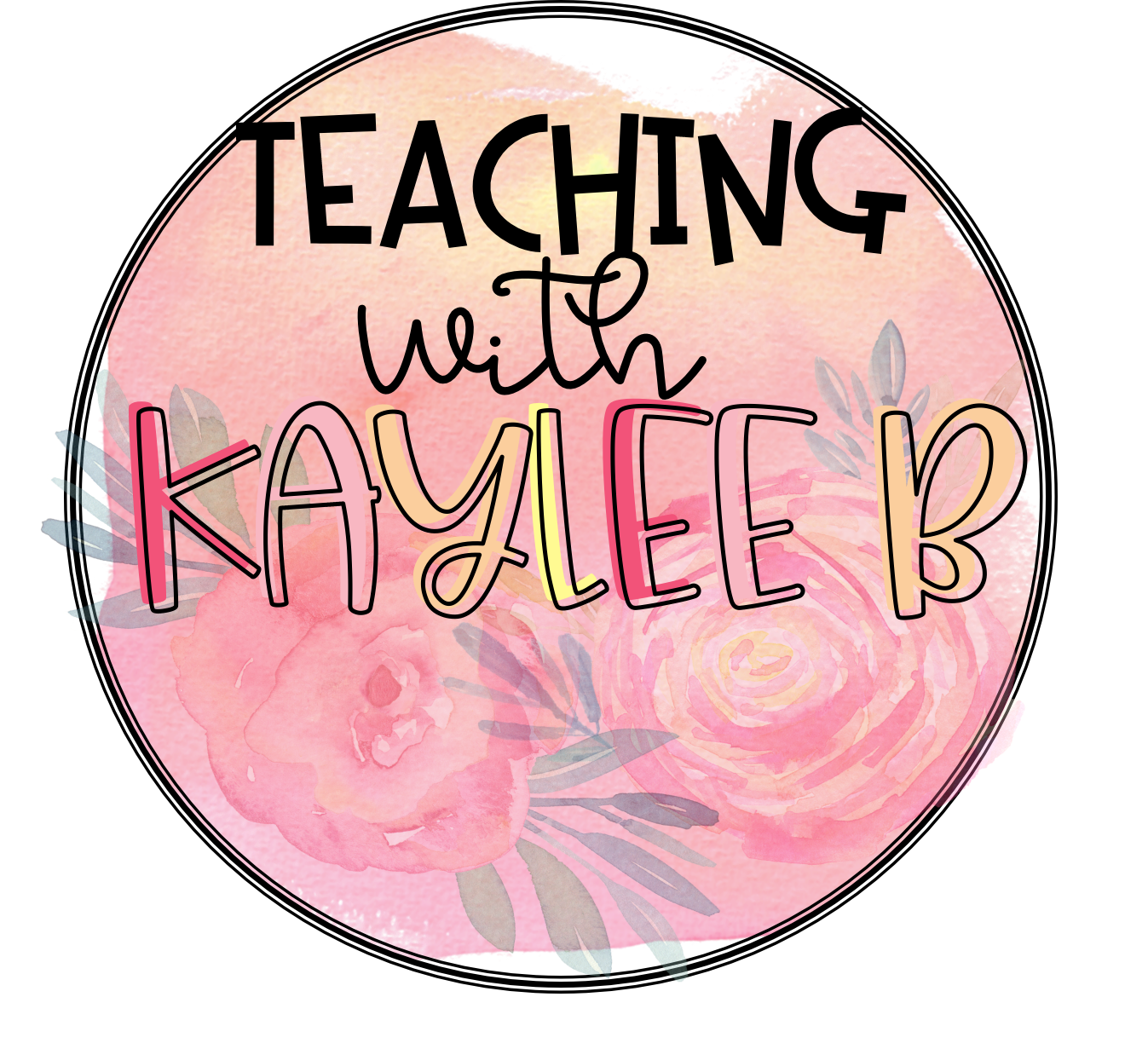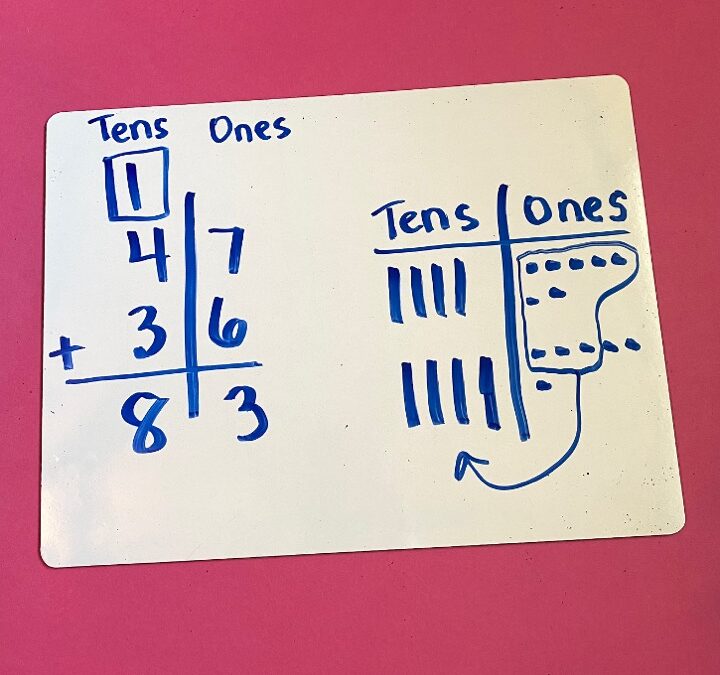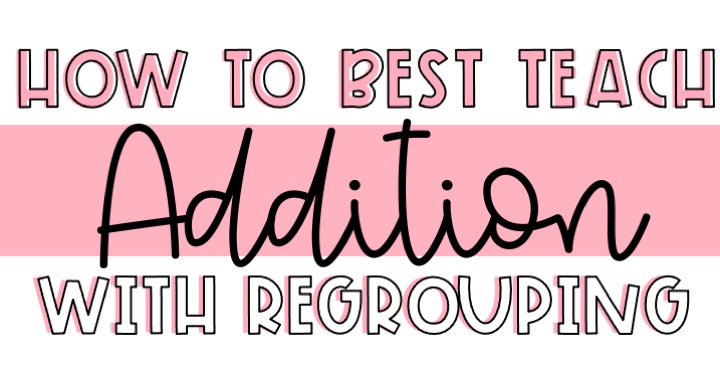
It’s usually pretty easy for students to learn addition. But when you have addition with regrouping it can be trickier for students. Our goal as 2nd grade teachers is to help students fluently add within 100 using strategies based on place value. When students learn the algorithm for addition with regrouping, they can learn it based on rote memorization of steps, or they can learn it with meaning, where they understand using place value to help them regroup. We want students to understand place value while learning to regroup and today I’m going to share how to best teach addition with regrouping to accomplish just that.
Addition with Regrouping
When it comes to addition with regrouping, you want to make sure students first understand place value. If you show students the number 47 do they know that it means 4 tens and 7 ones?
I like to help students learn this by working with base ten blocks. I give each student a set of tens and ones and then I have them make random 2 digit numbers. They quickly come to see what a 2 digit number actually means. I also like to show students how to draw place value blocks. They use a line to represent tens and small dots to represent ones. I have them practice drawing the base ten blocks for numbers on a white board.
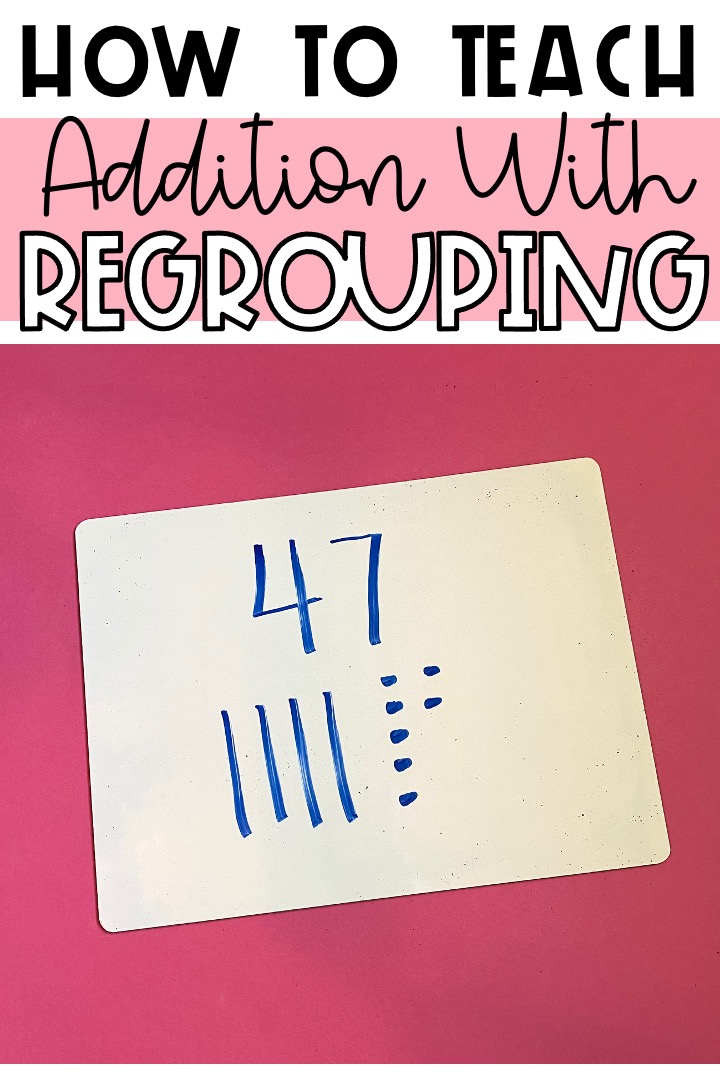
Then have students put an addition equation in a tens and ones chart. I’ll show you how I teach this with an addition with regrouping example.
Addition with Regrouping Example
I first have students draw a tens and ones chart. It looks like an upside down “t”. We draw a regrouping box above the tens side. Then we draw another tens and ones chart. This one doesn’t include a regrouping box or a plus sign because students are going to draw a picture to help them solve it.
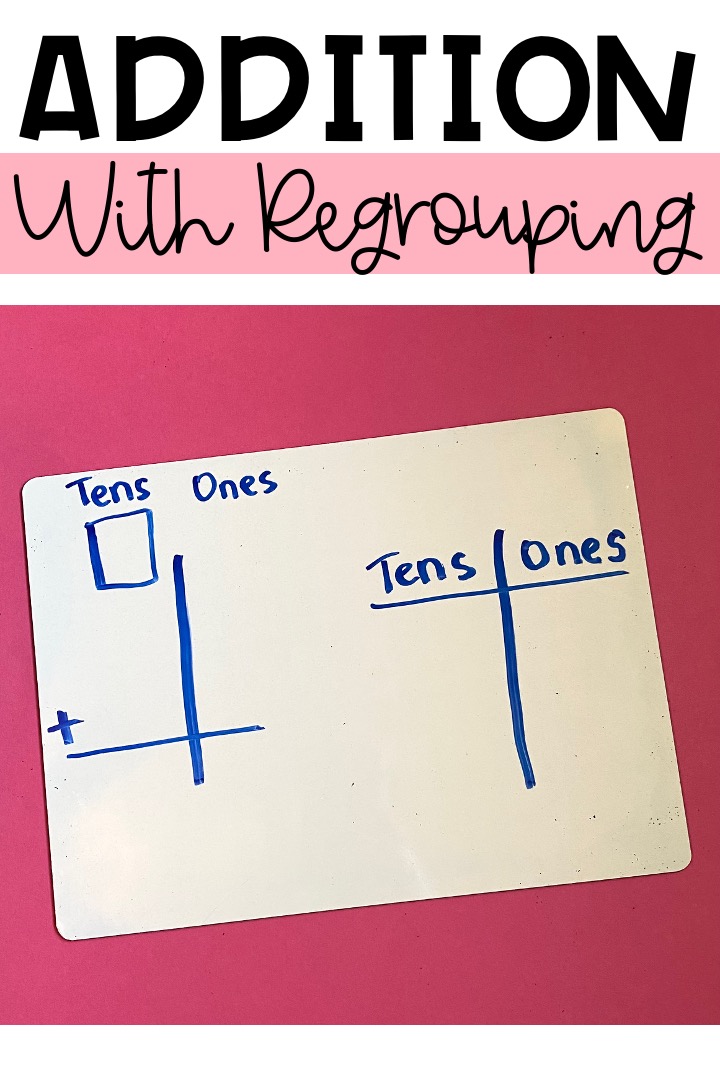
We write our equation in the tens and ones chart. For this example we are going to look at 47+36. Then we draw those numbers. 47 has 4 tens and 7 ones. 36 has 3 tens and 6 ones. We start with the ones and count up how many. There are 13, but 13 is a group of ten and 3 ones left over. So we circle ten ones, draw an arrow over to our tens and regroup those ones into a ten by drawing a ten rod. Then students can easily see there are 3 ones left.
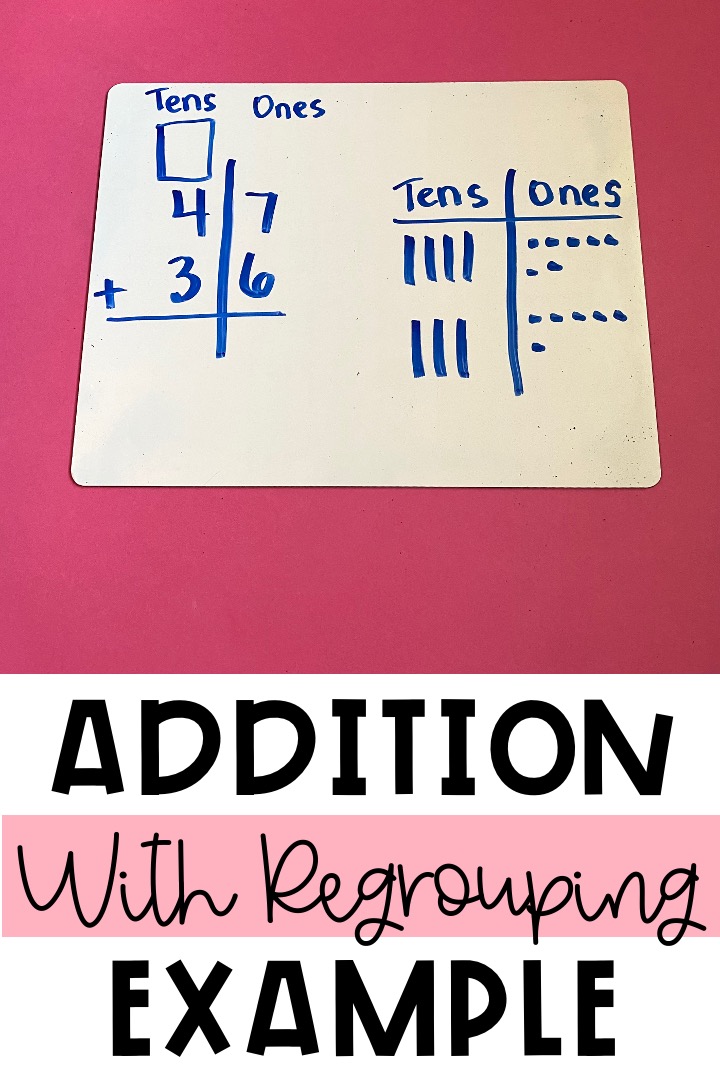
Then we need to record what we just did. 7+6 is 13. 13 is a group of 10 and 3 left over so we regrouped. We need to put that regrouped ten into our regrouping box by putting a 1 there. Then we put the remaining 3 in the ones place. Then we can count up how many tens there are. There are now 8 tens in our picture so we are going to put an 8 in the tens place. That makes sense because 1+4+3=8. So the answer is 84.
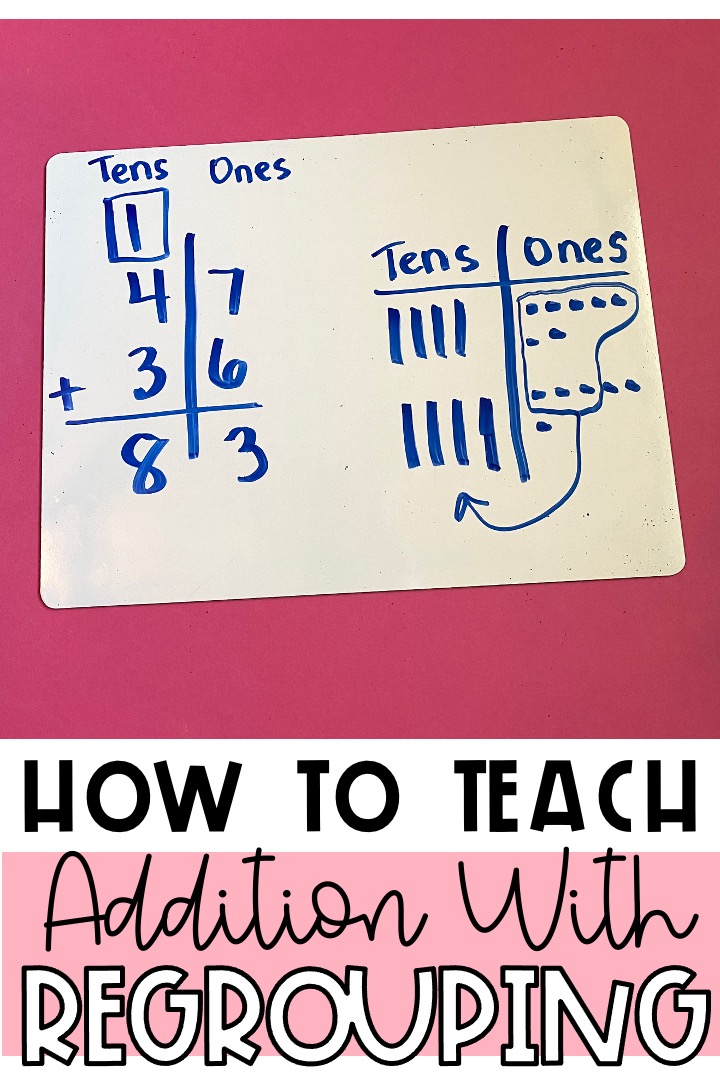
After doing a few examples together I want to give students guided practice and independent practice of addition with regrouping.
2 Digit Addition With Regrouping Worksheets 2nd Grade
I like to first give my students a guided practice worksheet. We solve these problems together on a worksheet. Students all have a worksheet and I will ask students what the steps are as we work through the problems together. We will still draw the pictures to solve each equation. Towards the end of the worksheet I will give students 5 minutes or so to finish the last two problems by themselves. At this time I walk around the classroom observing and helping students. Find the worksheets I use here.
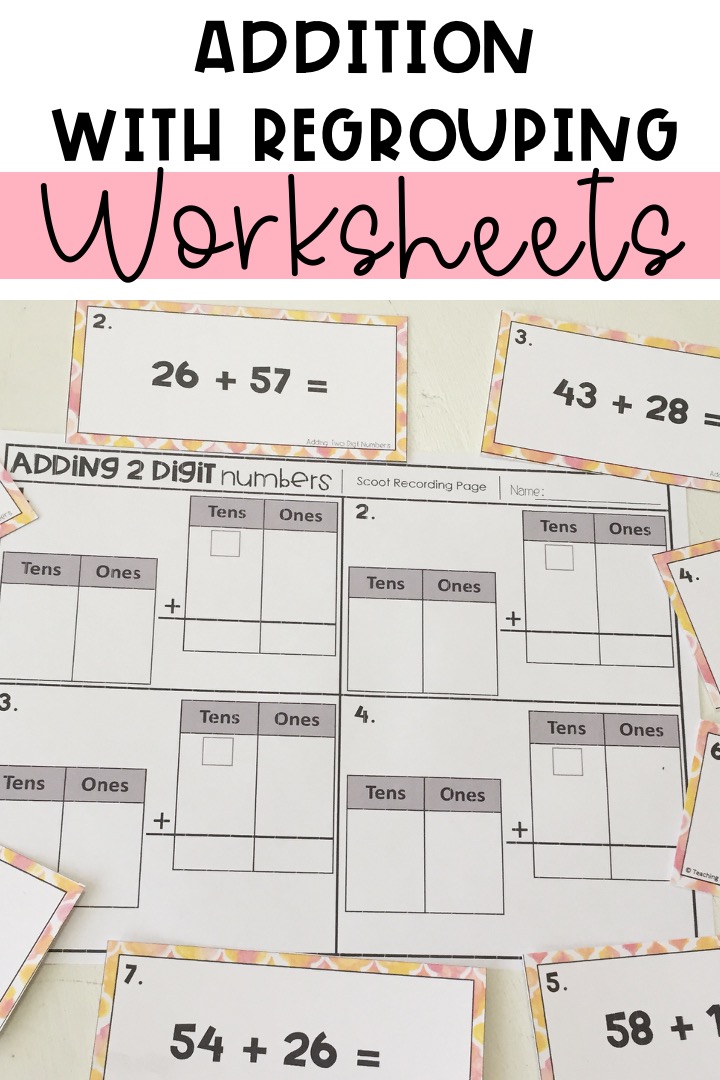
Then students are ready for independent practice. I could give students another worksheet but I like to get students out of their seats and moving so I turn it into a little scoot activity. I print out equations and tape them around our classroom. Then I give each student a recording sheet. They go around the class solving the problems through drawing pictures and using the tens and ones frames. Find the scoot activity I use here.
The next day, I like to help students see the pattern with the tens and ones frame so that they don’t have to rely on drawing the pictures. They start at the ones and add those numbers. Does that make a ten where they have to regroup? They regroup if needed and record it in their regrouping box and record their remaining ones. Then they add up all their tens numbers and get their answer. I again have students practice this with me, do guided practice with a worksheet, and then do a scoot activity as independent practice. Find these 2 digit addition with regrouping worksheets 2nd grade students can use here.
The standard algorithm for addition isn’t the only strategy that helps students use and understand standard place value. For all the 2 digit addition strategies I teach, check out this blog post here: 2 Digit Addition Strategies That Work
Students have a lot more success with 2 digit addition strategies when they fluently know the answers to math facts. Then they don’t get caught up on the strategies because they don’t know their addition facts.
I have a free resource for 1st and 2nd grade teachers to help them get their students to math fact fluency: The 7 Steps to Ensure Math Fact Fluency
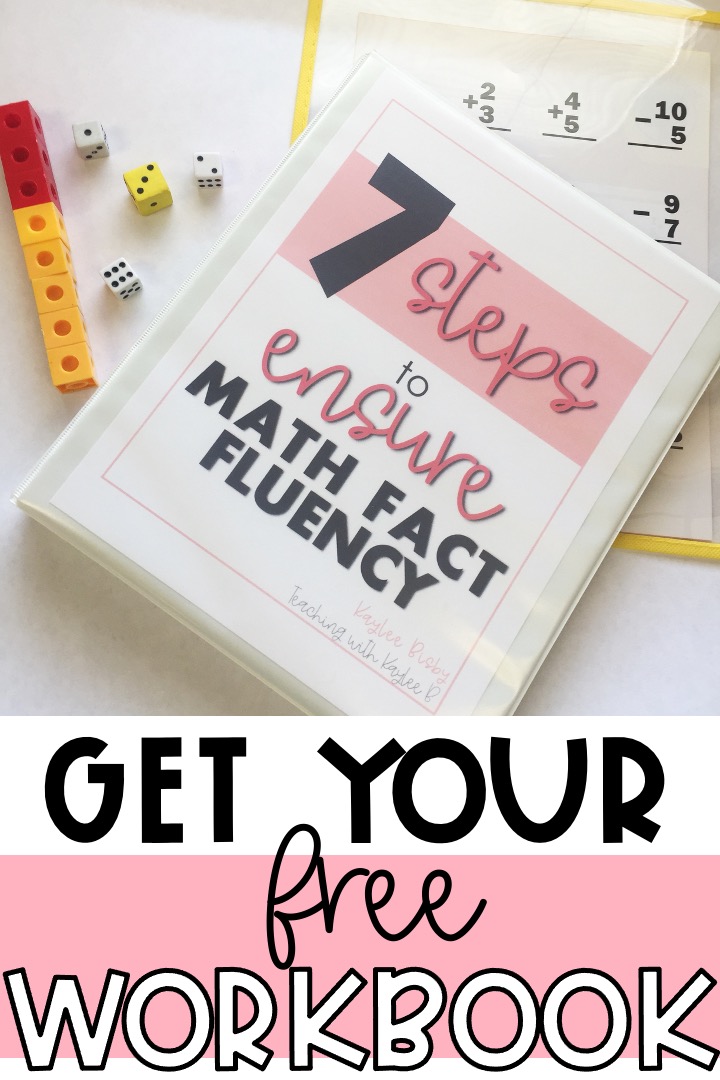
Download your free copy here.
